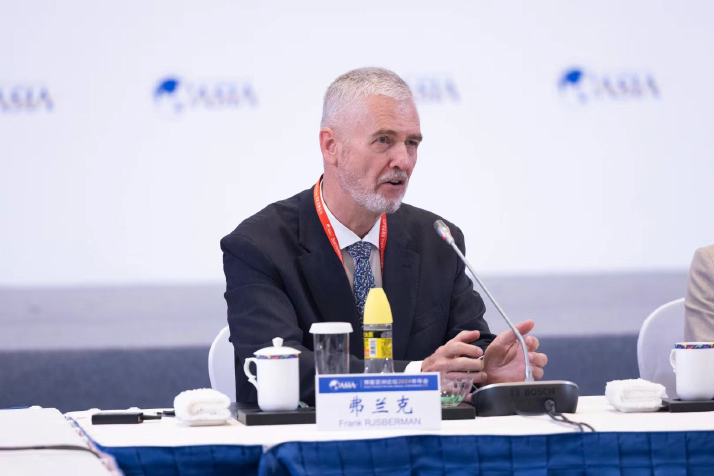| Voice |
| Financing a fresh green future | |
|
|
 Frank Rijsberman
With over 30 years of experience in global climate governance, Frank Rijsberman, Director General of the Global Green Growth Institute, a Seoul-based intergovernmental organization, has long engaged in helping governments convert to more sustainable modes of growth. In an exclusive interview with Beijing Review reporter Peng Jiawei, Rijsberman shared his views on China's rising influence in the global transition toward renewable energy as well as its growing presence in the realm of climate finance. Edited excerpts of the interview follow: Beijing Review: In what ways can China's green technologies and green finance bring opportunities to the world? Frank Rijsberman: To fight the climate crisis, we need to triple the use of renewable energy worldwide. However, many countries are worried about not having enough solar panels. China, as a globally leading producer of solar panels, has a key role in meeting this ever-growing demand. Beyond that, China has become the world's largest wind energy producer. The country is also the world's largest manufacturer of electric vehicles and lithium-ion batteries. In sum, these sectors are really the main drivers of the transition to a green global economy. Apart from green technologies, China has also made substantial progress in green finance over the past few years. I used to serve on the jury for a green finance innovation award at the International Finance Forum (a nongovernmental organization founded in Beijing in 2003 by financial leaders from more than 20 countries and regions). And I was quite impressed by how rapidly Chinese banks were transitioning to a greener financial infrastructure. Without much fanfare, China has provided several trillion dollars worth of green finance to countries through the Belt and Road Initiative [BRI, a China-proposed initiative to boost connectivity along and beyond the ancient Silk Road routes]. The greening of these BRI infrastructure projects will have a very large impact on these countries. For this reason, many developing countries are looking forward to green investment from China. For the next decade, we hope that a much larger share of China's overseas investment will be financing the production of renewable energy in these countries. On that note, green technologies combined with green finance from China can be a real game changer for the global race toward a sustainable future. Digital technologies are responsible for an increasingly large proportion of greenhouse gas emissions, but they can also help companies go green. How do you see the relationship between digital innovations, green transformations and economic growth? Digital technologies can facilitate the transition to a low-carbon economy, but they cost a lot of energy as well. However, we should keep in mind that data centers and tech companies generate colossal revenues. They can afford to be green. In fact, some tech companies have become world leaders in climate action. I have talked to a lot of developing countries, who said switching to renewables is too costly. That's why they are still using coal. Plus, many countries worry that turning away from fossil fuels will lead to severe job losses. We need to show to governments around the world that going green isn't necessarily more expensive, and China's green finance sector can be a good example of that. We also need to educate countries on the fact that a low-carbon economy can actually create more jobs. The prospect of a net increase in green jobs can be a huge incentive for the global transition to renewable energy. Looking ahead, what challenges does China face in moving toward a net-zero future? Coal is a huge factor in combating climate change in China and the rest of Asia. We will have to not only increase the use of renewable energy, but also reduce our reliance on coal. One possible mechanism through which we can achieve this goal is China's carbon market. The country's creation of a national carbon trading market [in July 2021] is a good start, but it doesn't really replace coal with renewable energy. It focuses more on increasing the energy efficiency of coal-fired power plants, as opposed to being a real cap and trade system like the EU Emissions Trading System, a system that sets a cap on maximum emission. In order to meet its goals to peak carbon emissions before 2030 and achieve carbon neutrality before 2060, China will need to step up its domestic climate actions and increase its engagement with global environmental affairs. And an upgrade of the country's carbon market can be a key instrument for more rapid progress. Copyedited by G.P. Wilson Comments to pengjiawei@cicgamericas.com |
|
||||||||||||||||||||||||||||
|
